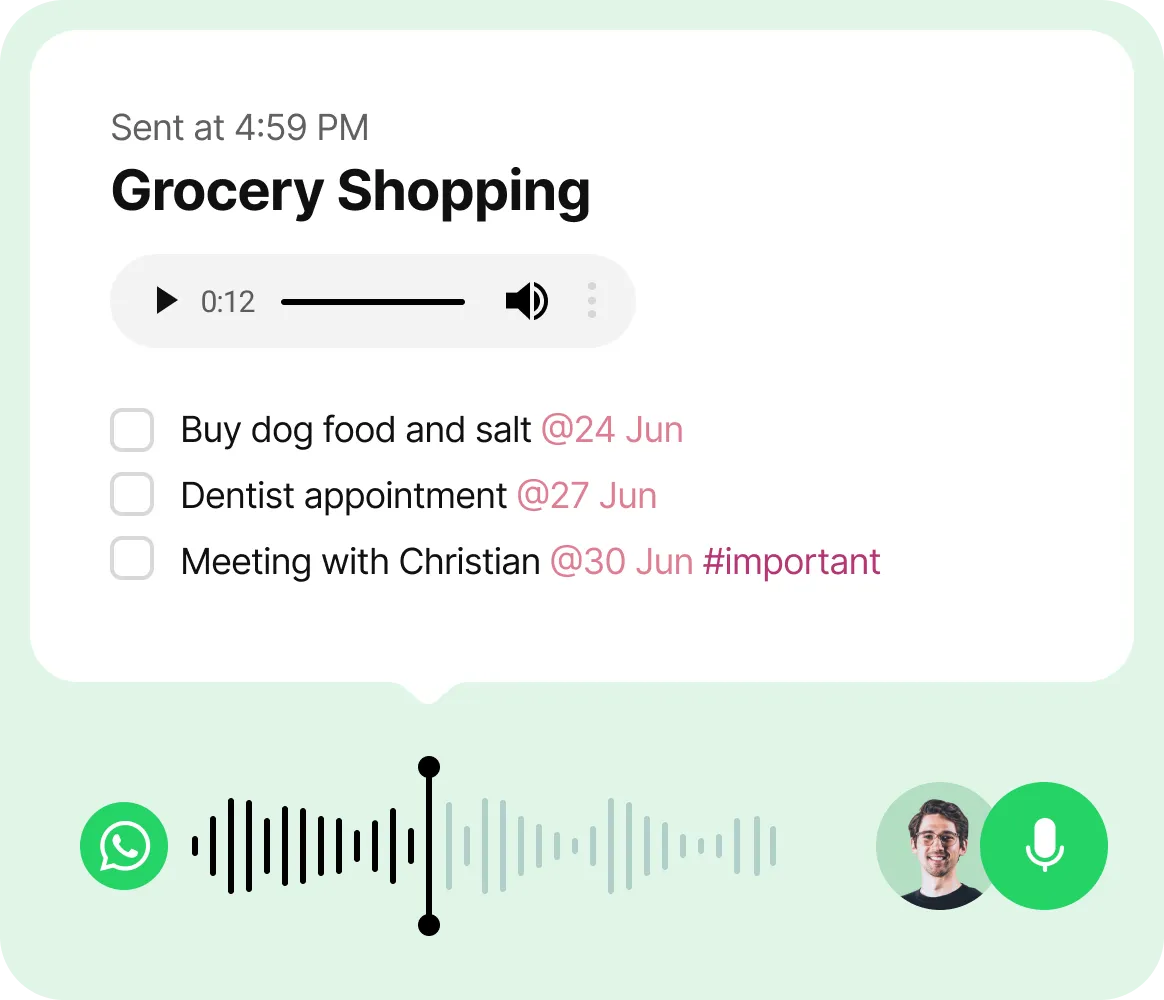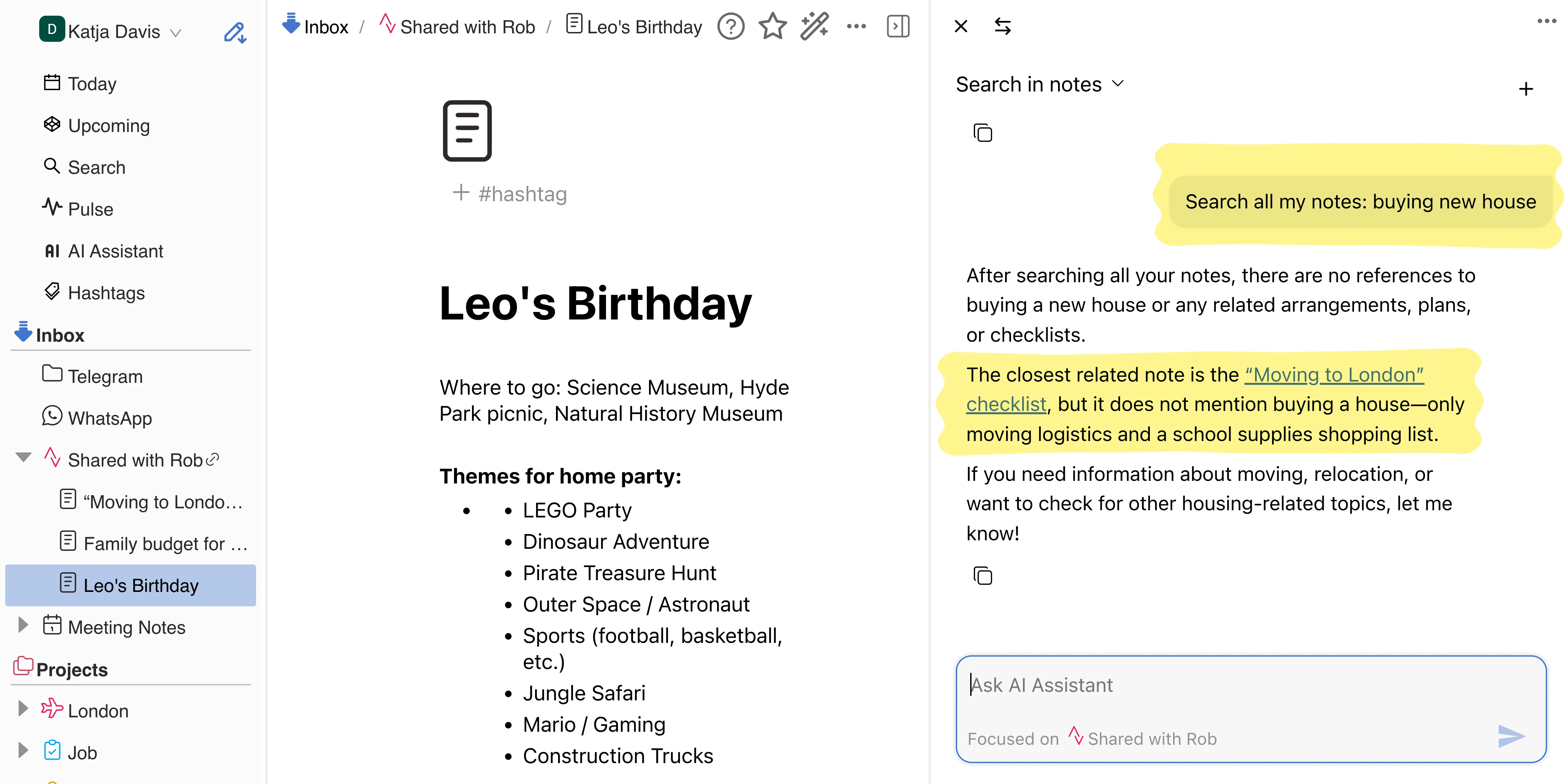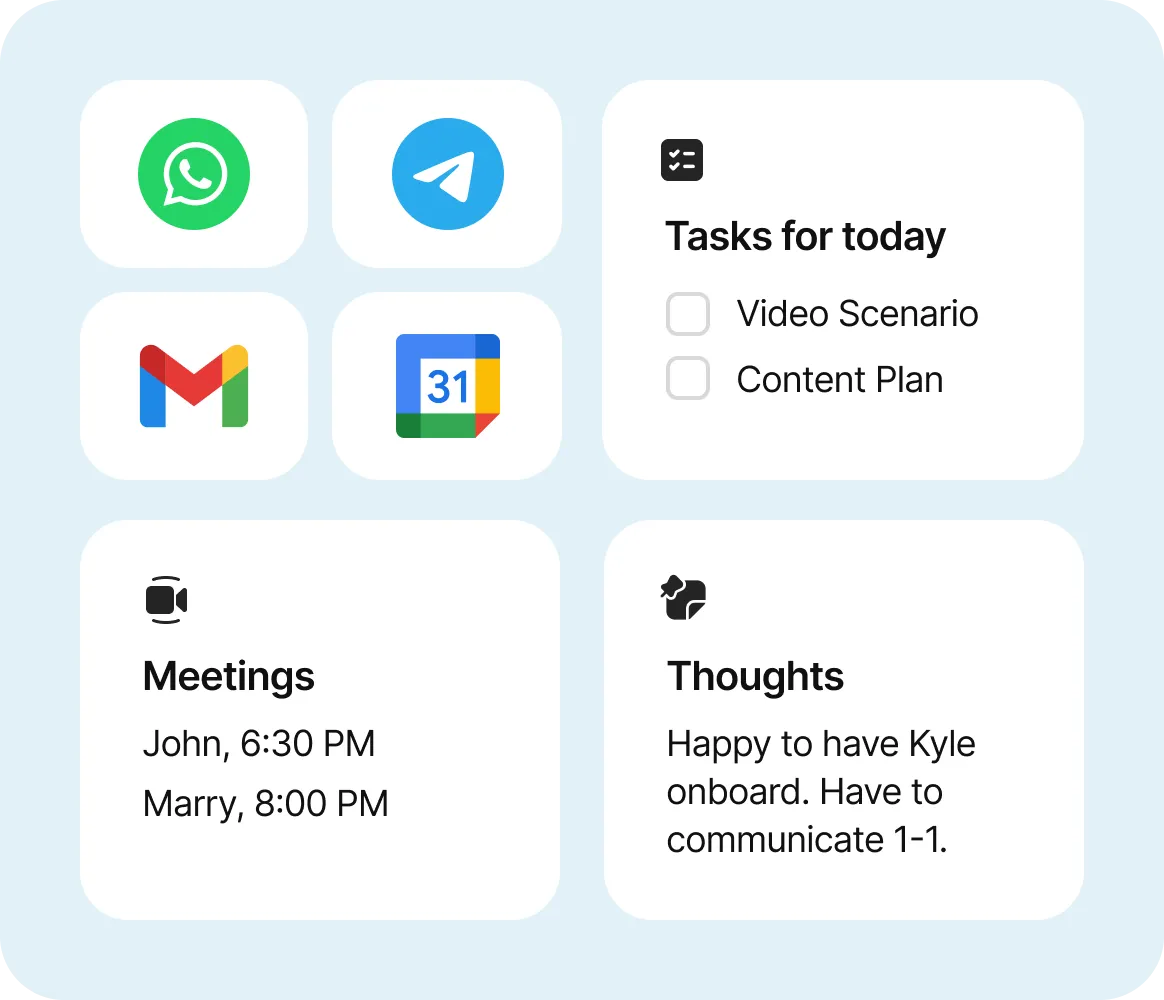· Sasha Zverev
How to Centralize Tasks and Action Items from Emails and Chat Messages (Without Losing Your Mind)
If your phone is basically a slot machine for anxiety—buzzing with messages, reminders, and random ideas at all hours—congratulations, you’re in excellent (and exhausted) company. Here’s my totally unscientific, battle-tested guide to surviving the chaos—and that’s exactly where we started when building Yaranga: one inbox for everything, tagging that doesn’t make me cry, and an AI that somehow understands my “that thing about Instagram, or maybe TikTok?” searches. No, it doesn’t erase the chaos, but at least now I can laugh about it (most days).

When Everything Demands Your Attention
As a 3x founder, I’m always juggling a ridiculous number of things at once—development, legal paperwork, product building, marketing, ads, budgeting, even mailing customers. My attention is split between so many channels and responsibilities that sometimes, just to cope, I grab a real-world sticky note, scribble down a task or idea, and promptly forget about it. (Honestly, it’s a great way to ignore problems—highly recommend if you want to pretend your to-dos don’t exist.)
But reality always catches up. When it’s time to actually move things forward—or worse, when I need to recover the context of something I ignored for a month—I realize how much I rely on having a robust inbox or database. Without a central place to capture and restore all those scattered thoughts and tasks, it’s impossible to get back on track.
My Struggle with Omni-Channel Overload
Even when I’m walking (which is always—fun fact: I never commute, I just walk everywhere), I’m not really “offline.” I’ll admit it: I’m that person reading notifications while crossing the street, V60 in hand. Sorry, guys, it’s hard for me to be detached.
And let’s be real: “Telegram pings. WhatsApp buzzes.” (I know, it sounds like I’m just name-dropping apps for street cred, but honestly, I use one of them for work and the rest just add to the chaos.)
So there I am, trying to enjoy my coffee—yes, it’s a V60, not a flat white—maybe even sneak in a few pages of a book. But the moment I start to relax, my phone lights up. Sometimes it’s work, sometimes it’s just another group chat, but my brain can’t help itself. I could, in theory, ignore the messages and get back to my book. But my brain? It’s like a squirrel on a caffeine rush—work, work, work, all night, a little sleep, then back at it. I’m not officially ADHD, but I live like I am. The moment a message comes in, I’m already thinking about my colleague’s problem, or my own endless product and development puzzles. Goodbye, peaceful coffee break.
So what do I do? I save everything for later. I just forward messages, tasks, random ideas—and yes, even voice memos—straight to Yaranga. Letting the AI transcribe and extract tasks from my rambling audio notes. It’s the only way I can keep up with the chaos—otherwise, I’d never get back to my book (or my coffee).

Different Brains, Different Battles: Why Imposing Structure Never Works
One of the biggest revelations in building Yaranga with my business partner was just how differently we each handle personal chaos. Her approach to managing the daily flood of information is almost the polar opposite of mine. We’ve had our fair share of heated debates—sometimes it feels like we’re speaking different languages when it comes to productivity. But this friction led to a crucial realization: we should never impose a single structure on our users. Everyone’s chaos is unique. Everyone is fighting their own ADHD demons in their own way. And, honestly, most people already know what works (and doesn’t work) for them better than any productivity guru ever could.What Changed (and What Didn’t) When I Made Yaranga My Inbox
Switching to Yaranga as my central inbox changed a lot for me—but not everything. I still rely on old-school task trackers for long-term development projects. When it comes to tracking sprints, managing massive backlogs, or squashing bugs, those tools are simply better suited for the job. But for breaking down big tasks into actionable steps? That’s where Yaranga shines.Whenever I need to save something for later—whether it’s a fleeting idea, a link, or a voice note—I toss it into Yaranga. It’s my catch-all for everything that doesn’t have a clear home yet. And when I’m gathering a mountain of links, insights, and articles to finish writing something like this article, everything goes into Yaranga. Then, I let the AI assistant help me navigate, summarize, and even draft excerpts—because why do the hard work myself when I can outsource it to a robot that never complains, never sleeps, and (unlike my business partner) never argues about folder structure? (Okay, that last part is only half a joke.)
The Power of Flexible Structure (or No Structure at All)
Here’s the real magic: Yaranga doesn’t force a structure on you. You can build your own system, or you can live in a flat, tag-driven world with zero hierarchy—just tagging and AI-powered data extraction. That’s exactly how my partner prefers to work, and Yaranga supports her just as well as it supports me.When You Can’t Remember Where (or What) to Search: Yaranga’s AI to the Rescue
Let’s be honest: my inboxes and chats are a disaster. Half the time, I can’t remember if I saved something in Telegram, WhatsApp, or just scribbled “social media thingy” somewhere. Enter Yaranga’s AI search—finally, a tool that doesn’t expect me to remember the exact keyword or which app I used at 2am. I just type “Instagram,” and Yaranga magically digs up everything remotely related, from Facebook rants to that random “social” note I wrote in a caffeine haze.
It’s like having a personal assistant who actually understands my brain fog—and never rolls their eyes when I say, “You know, that thing about Instagram… or was it TikTok?”

How Yaranga Helps Me Stay Sane
Let’s just say, for most of my life, my “system” was a glorious mess: sticky notes everywhere, random screenshots, and a graveyard of half-finished to-do lists scattered across every app imaginable. Finding what I needed felt like winning the lottery—if the lottery involved searching through three messaging apps and a pile of napkins.
Now? My inbox is still a mess (let’s be honest, we didn’t invent a way to eliminate chaos). What we did invent is a way to navigate it—so I don’t get overwhelmed, so I can actually forget things (what a relief!), and then remember them when it matters. Yaranga doesn’t erase the mess, but it finally lets me live with it—and even get things done.
- Before: Chaos, panic, and the constant feeling I’d forgotten something important.
- After Yaranga: Still chaos (let’s be real), but at least it’s organized chaos—and I can finally breathe.
One more thing: Tips for Others Drowning in Omni-Channel Data
If you’re also drowning in a sea of emails, chats, and random voice notes, here’s what actually helped me (besides caffeine):- Centralize your inputs. Stop scattering your ideas across a dozen apps. Dump everything into one place—trust me, your future self will thank you.
- Don’t process everything in real time. You’re not a robot. Batch your review sessions and process things when your brain is actually working.
- Use voice memos and let AI do the heavy lifting. Record your thoughts on the go, and rely on Yaranga’s AI to transcribe, extract tasks, hashtags, and dates—so you don’t have to play detective later.

Seriously, try Yaranga or any system that lets you build (or ignore) structure as you see fit. Your chaos, your rules.
Conclusion
Look, switching to Yaranga didn’t suddenly turn me into a productivity ninja (still waiting for that superpower to kick in), but it did give me less stress, more clarity, and—believe it or not—actual time for things that matter. If you’re also wrestling with omni-channel chaos, I genuinely want to hear what’s working for you (or what’s driving you up the wall).
And hey, if this all sounds suspiciously like I’m trying to sell you Yaranga… well, maybe I am. But only because it’s the first tool I actually care about—and the first one I’m genuinely trying to make better, not just tolerate. So go ahead—give Yaranga a try. Worst case, you get a good story out of it.

